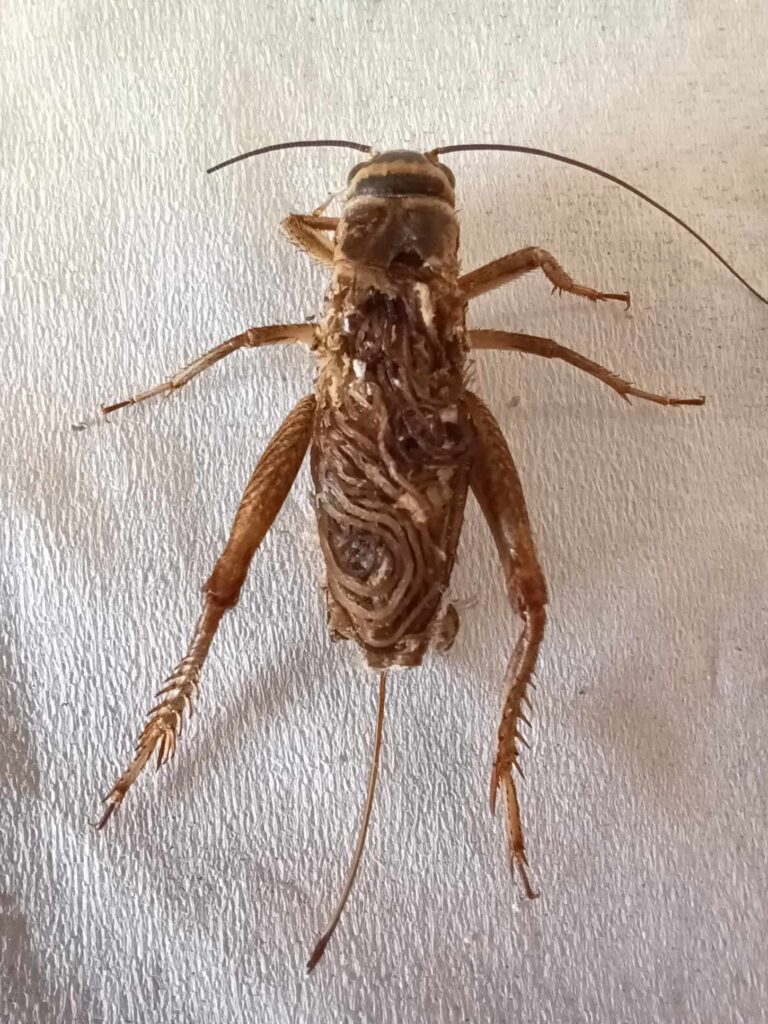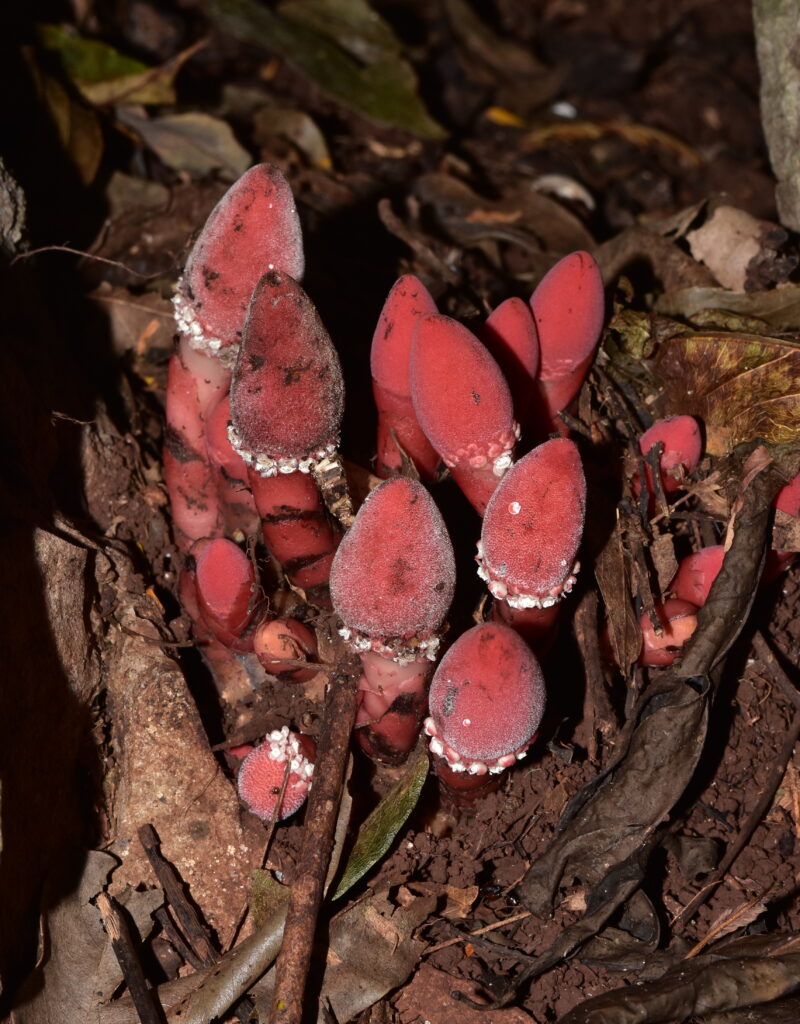If you're looking for a horror show to check out this Halloween, look no further than nature itself.
Gruesome parasites abound in the natural world, and UBC experts are here to fill you in.
The good news is, they either don't infect humans, or are very, very rare - but they're all pretty creepy.
Mind-control worms that loop around a bug's gut then force it to drown itself

G. paranensis egressing from a tree wētā Hemideina sp. (photo taken in New Zealand, 2019). Credit: Dr. Jeff Doherty.
From Dr. Jeff Doherty, postdoctoral fellow in the department of zoology (limited availability):
What are they? Hairworms (phylum Nematomorpha) are parasites that start and end their life in water. In the meantime, they infect insects that live on land: usually crickets, ground beetles, and grasshoppers. They are eaten as cysts, emerge in the stomach and punch through into the insect body, where they absorb the creature's blood and grow into their adult form. In crickets, this can be 10 to 20 times the length of the insect, so the thin worms loop themselves around the insect's gut, inside their body. These are found around the world except in the two poles.
What do they do? Adult worms must enter water to reproduce. So, when they're ready to mate, they somehow manipulate their insect hosts to enter the water, often resulting in the insect host drowning.
Can they infect humans? No, they can't. However, there has been one reported case of a human eating an adult hairworm, which then emerged from their urethra. This is a very rare occurrence. Some people ingest parasites through unwashed greens or uncooked food so it's important to wash your vegetables and cook your food thoroughly.
Also ask me about: The parasite, found in Alberta, spread through snail slime balls that controls the brains of ants, forcing them to climb onto a leaf at certain temperatures in order to be eaten by cattle.
Eye-bulging fungus that spreads to your brain
From Dr. Mary Berbee, professor in the department of botany:
What is it? Fungi from a certain family, order, and class that often lives in soil can release spores that people breathe through their noses and cause a rare disease called Rhinocerebral mucormycosis.
What does it do? The spores become implanted in the nose and threads from the fungus known as 'mycelium' grow through a person's nasal passage and into their eye sockets and brain. The growth causes the nose to bleed, sinuses to swell, and eyes to bulge out. The disease spreads rapidly and is often fatal.
Can it infect humans? Yes, but it's very, very rare. Those who are immunocompromised including diabetics are the most at risk. Most cases have occurred in India.
Also ask me about: The fungal disease that only effects armadillo hunters.
The plant parasite that convinces its host to grow into it, shares flesh, sucks nutrition and sheds its useless genes
Dr. Sean Graham, professor in the department of botany:
What is it? Two species of plant parasites from the sandalwood family (Balanophora) that induce their host plant to grow into the body of the parasites, in an underground tuber, a special underground stem composed of mixed host/parasite tissue. These plants are found in Asia, Pacific Islands, Madagascar, and tropical Africa.
What does it do? Through this tuber, the parasite gets all of its nutrition from its host rather than sunlight, and so has shed many genes related to major life processes, including photosynthesis. Researchers think the parasite also synchs itself physiologically with its host's functions, for instance to flower around the same time as the host.
Can they infect humans? No, we're safe!
Interview language(s): English (Doherty, Berbee, Graham), French (Doherty)








